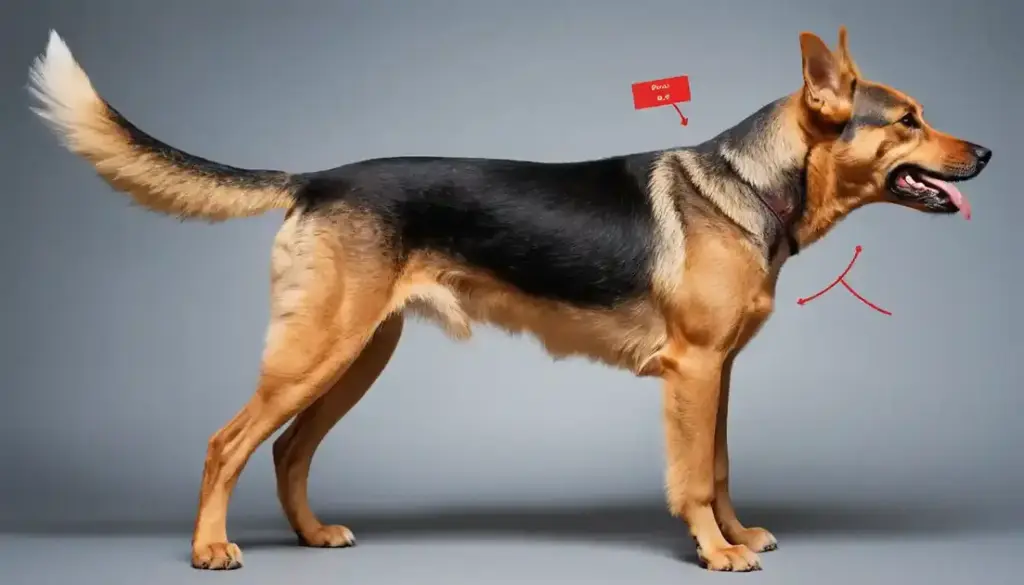Dogs rely on non-verbal signals to express emotions, intentions, and social cues, making dog body language a critical component of interspecies interaction.
For pet owners, decoding these subtle signals, such as shifts in posture, ear positioning, or tail movements, can transform ambiguous behaviors into actionable insights.
This knowledge bridges the communication gap between humans and their canine companions, fostering trust and reducing misunderstandings.
Key Benefits of Interpreting Non-Verbal Signals
- Stronger Human-Canine Bonds: Recognizing stress indicators (e.g., lip licking, averted gaze) allows owners to address discomfort proactively, deepening mutual trust.
- Enhanced Safety: Identifying fear or aggression cues (e.g., flattened ears, tense lips) helps prevent escalations during interactions with strangers or other animals.
- Improved Training Outcomes: Aligning training methods with a dog’s emotional state, such as pausing when yawning or freezing occurs, creates a more effective learning environment.
Overview of the Visual Guide’s Structure
This guide breaks down complex canine communication into digestible visual elements, combining scientific research with practical examples:
- Core Signals: Tail wagging patterns, ear positions, and eye contact as primary indicators of emotional states.
- Subtle Cues: Subtle behaviors like head turning, slow movements, or lip licking that reveal discomfort or appeasement.
- Contextual Analysis: How environmental factors (e.g., new environments, social interactions) influence dog body language interpretation.
By merging evidence-based insights with actionable visuals, this resource empowers owners to become fluent in the silent language of their pets.
Why Dogs Use Body Language
Evolutionary Roots of Canine Communication
Dogs, as descendants of wolves, evolved complex non-verbal systems to navigate social hierarchies and environmental challenges.
Dog body language serves as a survival mechanism, allowing them to convey intent, whether it’s submission, playfulness, or threat, without vocalization.
Unlike humans, who rely heavily on verbal expression, dogs use a combination of physical signals to interact with their surroundings, making this silent “language” essential for their safety and social cohesion.
Visual Cues: The Building Blocks of Canine Expression
Dogs communicate through a nuanced interplay of physical signals, each tied to specific emotional states:
- Tail Movements: A wag isn’t always a sign of happiness. A high, rigid tail may signal alertness or dominance, while a low, slow wag often indicates uncertainty.
- Ear Positions: Forward-facing ears suggest curiosity, whereas flattened ears typically denote fear or aggression.
- Eye Contact: Direct staring can be confrontational, but soft, squinted eyes paired with a relaxed posture often reflect contentment.
- Body Posture: A lowered stance with a tucked tail signals submission, while a stiff, upright posture suggests confidence or territoriality.
Why Interpreting Signals Matters for Pet Owners
Understanding these cues isn’t just about decoding behavior—it’s about fostering trust and preventing conflict:
- Safety First: Recognizing signs of fear (e.g., lip licking, tucked tail) helps avoid triggering defensive reactions during vet visits or encounters with strangers.
- Effective Training: Aligning commands with a dog’s emotional state—pausing when stress signals emerge—enhances learning retention.
- Deeper Connection: Responding to subtle cues like leaning for affection or rolling over for play strengthens mutual understanding, turning coexistence into companionship.
Contextual Nuances and Environmental Influences
A dog’s body language must always be interpreted within context. For example, a wagging tail in a familiar park may signify joy, but the same motion in a tense encounter could mask anxiety.
Factors like breed traits, past experiences, and immediate surroundings further shape how signals are displayed and perceived.
By mastering these visual signals, pet owners gain the tools to navigate their dog’s emotional world—a skill rooted in science but practiced through empathy and observation.
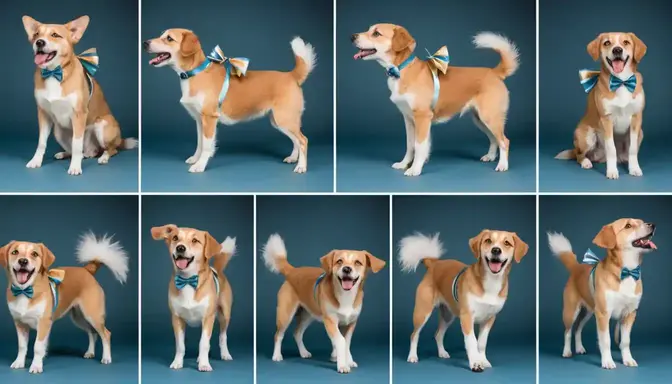
The Tail: More Than Just Wagging
Dogs use their tails as dynamic communication tools, conveying emotions ranging from confidence to anxiety.
Understanding these signals transforms casual observation into meaningful dialogue between pet owners and their companions.
Tail Positions: A Window Into Emotional State
A dog’s tail position acts as a barometer for their immediate feelings, influenced by context and accompanying dog body language:
- High and Rigid: Often signals alertness, dominance, or territoriality. This posture is common in guarding situations or when a dog feels threatened.
- Neutral or Mid-Height: Indicates relaxation and confidence, typically seen during routine activities like walking or playing.
- Low or Tucked: A tucked tail suggests fear, submission, or discomfort. Combined with other signs (e.g., flattened ears), it may indicate stress or avoidance.
Wagging Speed and Direction: Decoding the Rhythm
The nuances of tail wagging—speed and direction—offer deeper insights than the mere presence of movement:
- Fast, Wide Swings: High-energy wags often reflect excitement or playfulness, especially when paired with a relaxed posture.
- Slow, Small Movements: Hesitant wags may signal uncertainty or cautious curiosity, particularly in unfamiliar environments.
- Direction Bias: Research suggests wagging tails leaning to the dog’s right (the owner’s left) correlate with positive emotions, while leftward wags may indicate nervousness or avoidance.
The Misconception of Wagging = Happiness
A wagging tail is frequently misinterpreted as a universal sign of joy. However, wagging can also occur in stressful or aggressive contexts:
- Stiff, Rapid Wagging: Often precedes defensive behavior, such as during territorial disputes or fear-inducing situations.
- Tail Twitching: May accompany growling or lip licking, signaling irritation or anxiety.
Pet owners must assess the full dog body language puzzle—ear position, posture, and vocalizations—to avoid misreading intent.
By prioritizing context over isolated cues, pet owners gain the clarity needed to respond appropriately to their dog’s unspoken needs—a skill rooted in science and refined through observation.

Ears: Listening Without Hearing
Dogs’ ears serve as both sensory organs and expressive communication tools, offering real-time insights into their emotional and cognitive states.
Unlike humans, who rely heavily on verbal expression, canines use ear positioning to convey curiosity, tension, or social intent, making this aspect of non-verbal communication critical for owners to interpret.
Erect vs. Floppy Ears: Breed Variations and Communication Roles
While ear anatomy varies by breed, their communicative function remains consistent:
- Erect Ears (e.g., German Shepherds, Siberian Huskies): Often signal heightened awareness or confidence. Upright ears, twitching, or rotating independently demonstrate active listening and environmental scanning.
- Floppy Ears (e.g., Beagles, Basset Hounds): Though less mobile, subtle shifts, such as lifting the base or folding backward, still reflect emotional cues like submission or relaxation.
Ear Positions and Their Emotional Meanings
A dog’s ear orientation acts as a directional map to their internal state:
- Forward-Facing: Ears aligned toward a stimulus (person, sound, object) indicate curiosity, focus, or friendliness. This posture often precedes playful or investigative behavior.
- Backward or Flattened: Ears pinned against the head typically signal fear, anxiety, or appeasement. Combined with a tucked tail or lowered body posture, this may suggest avoidance or stress.
- Sideways or Half-Back: A neutral or conflicted stance, reflecting uncertainty or cautious assessment. Common in novel environments or during ambiguous social interactions.
Interpreting Perked vs. Flattened Ears
- Perked Ears: Alert and attentive, often seen during training sessions, greetings, or when processing unfamiliar sounds. Paired with relaxed eyes and an open mouth, this signals positive engagement.
- Flattened Ears: A defensive or submissive gesture, frequently observed during loud noises (thunderstorms, vacuum cleaners) or confrontations. Owners misinterpret this as “calm,” escalating a dog’s distress.
Context Matters: Combining Signals for Accuracy
Ear positioning alone can be misleading without evaluating the full body.
For instance, forward-facing ears paired with a stiff tail may indicate territorial alertness, whereas the same position with a wagging tail suggests joyful anticipation.
Always cross-reference with posture, eye contact, and vocalizations for precise interpretation.
By mastering ear-based cues, pet owners gain a nuanced understanding of their dog’s unspoken needs—a skill rooted in science and refined through observation.
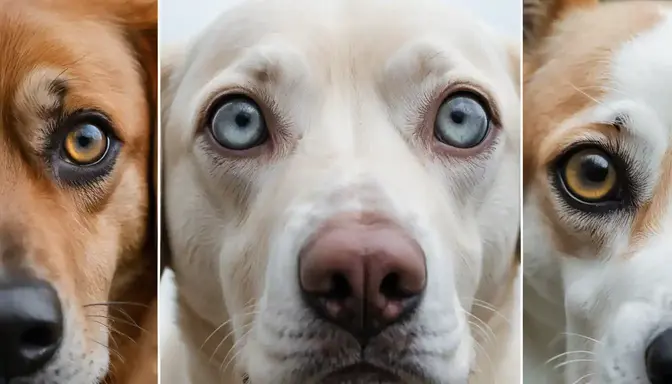
Eyes: Windows to Your Dog’s Soul
A dog’s eyes serve as powerful indicators of their emotional and cognitive state, offering pet owners critical insights into their unspoken needs.
By analyzing gaze intensity, pupil dilation, and subtle eye movements, owners can better interpret whether a dog feels relaxed, stressed, or alert.
Soft Eyes vs. Hard Stare: Decoding Gaze Intentions
- Soft Eyes: Characterized by partially closed lids or squinting, this expression often signals relaxation, trust, or affection. Dogs may exhibit soft eyes when lounging with their owner or receiving gentle petting.
- Hard Stare: A fixed, unblinking gaze with wide-open eyes typically indicates focus, suspicion, or potential aggression. This stare is common during territorial disputes or when a dog perceives a threat.
Whale Eye: A Hidden Stress Signal
Whale eye occurs when a dog averts its head while keeping its eyes fixed on a stimulus, revealing the whites (sclera) of the eye.
This behavior often precedes defensive actions like growling or snapping, serving as an appeasement or avoidance strategy in uncomfortable situations.
Dilated Pupils: Emotional and Physiological Triggers
Pupil size fluctuates in response to light and emotional arousal:
- Dilated Pupils: Enlarged pupils can signal fear, excitement, or heightened alertness. For example, a dog may exhibit dilation when encountering a stranger or anticipating playtime.
- Constricted Pupils: Narrowed pupils, paired with tense facial muscles, may indicate irritation or discomfort, often observed during forced interactions.
Combining Eye Signals with Dog Body Language
Eye expressions must always be assessed alongside other cues to avoid misinterpretation. For instance:
- A soft gaze paired with a wagging tail and relaxed posture suggests contentment.
- Whale eye, combined with flattened ears or a tucked tail, confirms anxiety or fear.
- Dilated pupils with a stiff body and forward-facing ears may precede reactive behavior, requiring immediate intervention.
By mastering eye-based cues, pet owners gain a nuanced understanding of their dog’s unspoken needs—a skill rooted in science and refined through observation.
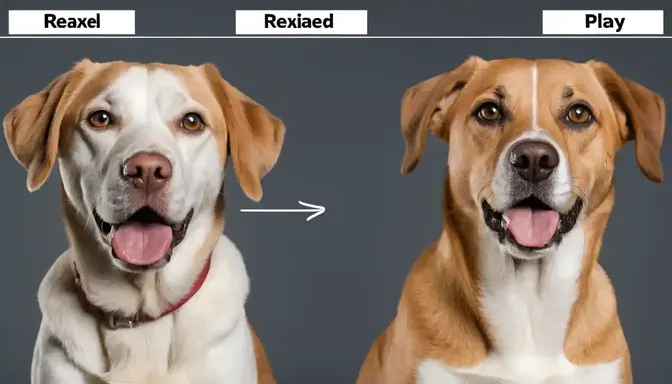
Mouth and Teeth: Smiles and Grimaces
A dog’s facial expressions, particularly around the mouth and teeth, offer critical insights into their emotional state.
These cues, often overlooked, can reveal comfort, stress, or potential conflict, making them essential for accurate communication interpretation.
Relaxed vs. Tense Mouth Signals
- Relaxed Mouth: A slightly open mouth with loose lips typically indicates calmness or contentment. This posture is common during play or rest, signaling a lack of tension.
- Tense Mouth: A tightly closed mouth or lips pulled back into a rigid line often precedes reactive behavior, such as growling or snapping. Combined with a stiff posture, this cue may indicate discomfort or defensive readiness.
Displacement Behaviors Under Stress
Dogs use repetitive mouth movements to self-soothe or communicate unease:
- Lip Licking: Rapid flicks of the tongue, especially in isolation, signal anxiety or appeasement. This behavior frequently occurs in situations like vet visits or when approached by strangers.
- Yawning: Beyond fatigue, yawning acts as a stress-relief mechanism. Dogs may yawn repeatedly in high-tension environments, such as crowded dog parks or during loud noises.
Baring Teeth: Playful Grins vs. Aggressive Threats
Teeth exposure varies significantly depending on context and accompanying signals:
- Playful Snarling: Teeth baring during play is often accompanied by a wagging tail, bouncing movements, and soft eyes. The lips may curl back partially, but the jaw remains loose and open.
- Aggressive Growling: Teeth baring paired with a stiff body, direct stare, and low growling signals hostility. The lips fully retract, exposing the gums, and may escalate to snapping if the threat persists.
Integrating Mouth Cues with Full-Body Analysis
Interpreting mouth signals requires evaluating the entire body:
- A relaxed mouth with a wagging tail and forward-facing ears suggests joy.
- Teeth bearing with flattened ears and a tucked tail may indicate fear-induced aggression rather than playfulness.
By mastering oral cues, pet owners gain a nuanced understanding of their dog’s unspoken needs—a skill rooted in science and refined through observation.
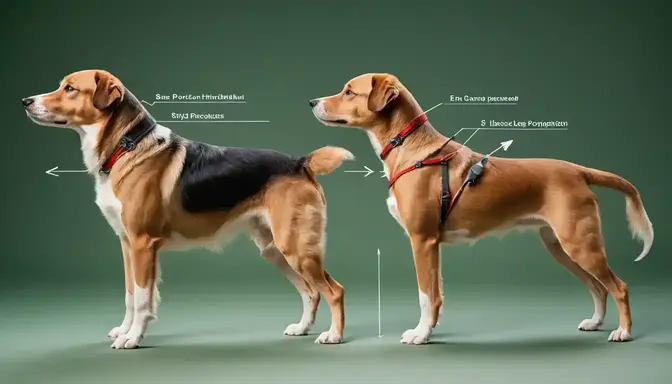
Posture and Stance: Standing Tall or Crouching Low
A dog’s full-body posture provides critical insights into their confidence, emotional state, and social intent.
By analyzing stance shifts—from assertive to defensive—pet owners can better anticipate behavior and respond appropriately to their dog’s needs.
Confident Posture: Signs of Assurance and Calm
A dog displaying confidence typically maintains a relaxed yet upright stance:
- Standing Tall: Legs straight, weight evenly distributed, and chest expanded. This posture signals comfort and control in familiar environments or during positive interactions.
- Neutral Head Position: Ears forward, eyes soft, and mouth slightly open. Often paired with a mid-height wagging tail, this indicates readiness for engagement without tension.
Defensive and Avoidant Signals
When dogs feel threatened or defensive, their bodies contract to appear smaller:
- Crouching: Lowered body, tucked elbows, and a tail positioned low or between legs. This stance frequently accompanies flattened ears or an averted gaze, signaling appeasement or fear.
- Rolling Over: Exposing the belly is a classic submission cue, though context matters—paired with relaxed limbs, it may also invite affection, while rigid limbs suggest anxiety.
The Play Bow: A Universal Invitation to Play
The play bow—a front-down, rear-up stance with paws planted and tail aloft—is a cornerstone of canine communication:
- Function: Universally recognized as a non-threatening gesture, it invites interaction while diffusing potential tension. Even in adult dogs, this posture mimics puppy behavior, signaling lighthearted intent.
- Contextual Clues: A play bow paired with bouncy movements and open-mouthed panting confirms joy, whereas repetitive bows with pauses may indicate overexcitement or confusion.
Interpreting Posture in Context
Posture alone can be misleading without evaluating the full body:
- A confident stance combined with a stiff tail and hard stare may precede territorial behavior, whereas the same posture with a wagging tail suggests curiosity.
- Crouching during thunderstorms differs from submission during greetings—additionally, assessing ear position and breathing rate clarifies intent.
By mastering posture-based cues, pet owners gain a nuanced understanding of their dog’s unspoken needs—a skill rooted in science and refined through observation.
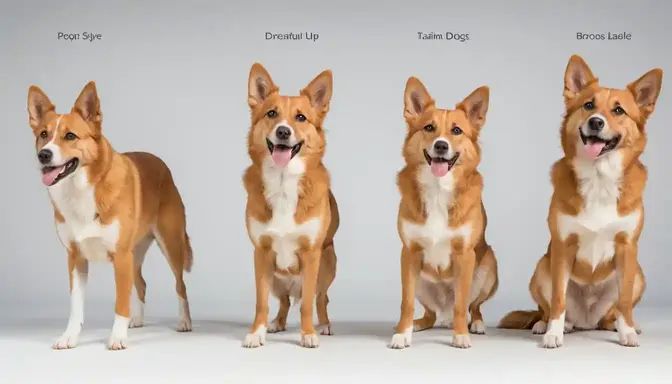
Dog Body Language: Putting It All Together
Interpreting canine communication requires a holistic approach, focusing on the entire dog rather than isolated signals.
While individual cues like tail position or ear orientation offer insights, their true meaning emerges only when combined with environmental context and the dog’s full-body expression.
Reading the Whole Dog: Beyond Isolated Signals
Dogs communicate through a dynamic interplay of physical and behavioral cues. For instance:
- A wagging tail paired with a relaxed posture and soft eyes suggests joy, whereas the same tail movement with flattened ears and a tense mouth may indicate anxiety.
- Forward-facing ears and a raised head often signal curiosity, but if accompanied by rigid limbs and a direct stare, they could precede territorial behavior.
Pet owners must assess the entire body to avoid misinterpreting subtle or conflicting signals.
The Role of Context: How Situations Shape Meaning
A single behavior can convey vastly different emotions depending on the environment:
- Meeting New Dogs: A play bow with a wagging tail invites interaction, but the same posture in a tense dog (paired with lip licking or whale eyes) may reflect nervousness.
- Reacting to Noises: A sudden freeze with dilated pupils and flattened ears during thunderstorms signals fear, whereas the same freeze during a game of fetch indicates focus.
- Social Interactions: Crouching with a tucked tail may denote submission to a dominant dog,but could also reflect discomfort around unfamiliar humans.
Common Scenarios and Interpretations
Understanding full-body language becomes critical in high-stakes situations:
- Greeting a Stranger: A dog with a loose stance, open mouth, and neutral tail likely feels comfortable. Conversely, a tucked tail, an averted gaze, and lip licking suggest hesitation.
- Territorial Alerts: Stiff posture, forward ears, and a high, rigid tail often precede defensive barking. Adding growling or teeth-baring confirms hostility.
- Playtime Dynamics: Bounding movements, exaggerated play bows, and open-mouthed panting affirm joyful engagement. Sudden pauses or tense mouths may indicate overstimulation.
Mastering Contextual Awareness
To refine interpretation skills, pet owners should:
- Observe Patterns: Track how a dog’s behavior shifts across environments (e.g., home vs. dog park).
- Note Transitions: Watch for rapid changes, such as a relaxed stance turning rigid in response to a stimulus.
- Combine Signals: Prioritize consistency—multiple relaxed cues confirm comfort, while mixed signals (e.g., wagging tail + whale eye) demand caution.
By synthesizing dog body language into a cohesive narrative, pet owners gain the tools to respond proactively to their dog’s needs—a skill rooted in science and honed through mindful observation.

Special Considerations: Puppies and Breed Differences
Understanding canine communication requires recognizing developmental and anatomical variations across life stages and breeds.
Puppies express emotions differently than adults, while breed-specific traits, such as facial structure or tail length, can alter how signals are displayed.
Puppy Body Language: Nuances of Immature Communication
Puppies’ social signals are less refined, often blending playfulness with uncertainty:
- Exploratory Behaviors: Frequent rolling over, exaggerated play bows, and exaggerated tail wags reflect curiosity but may mask nervousness in new environments.
- Incomplete Signals: A pup’s flattened ears or tucked tail may appear less pronounced than in adults, requiring owners to adjust interpretations based on age.
- Social Learning: Puppies use softer eye contact and slower movements to avoid overwhelming older dogs, a critical phase for shaping future interactions.
Breed-Specific Traits: Anatomical Influences on Expression
Breed characteristics directly impact how dog body language manifests:
- Brachycephalic Breeds (e.g., Bulldogs, Pugs): Flattened faces limit visible lip movements, making stress indicators like lip licking harder to detect. Owners should prioritize ear position and posture for accurate readings.
- Sighthounds (e.g., Greyhounds, Whippets): Long, slender tails often rest low but may raise slightly during alertness. Their subtler wagging patterns require context, such as forward ears, to distinguish excitement from tension.
- Herding Breeds (e.g., Border Collies, Corgis): Naturally upright ears and mid-height tails enhance their ability to signal focus or vigilance, often paired with crouching during work-related tasks.
Practical Tips for Interpreting Unique Signals
- Account for Age: Puppies may lack the physical control to fully express adult cues—pair vocalizations (whining, barking) with dog body language for clarity.
- Adjust for Anatomy: Short-nosed breeds often show whites of the eyes (whale eye) more prominently due to facial structure, requiring additional context to avoid mislabeling stress.
- Observe Baseline Behaviors: Familiarize yourself with your dog’s typical posture and movement to identify deviations, especially in breeds with atypical traits.
By factoring in developmental and breed-specific variables, pet owners refine their ability to decode their dog’s unspoken needs—a skill rooted in science and honed through mindful observation.
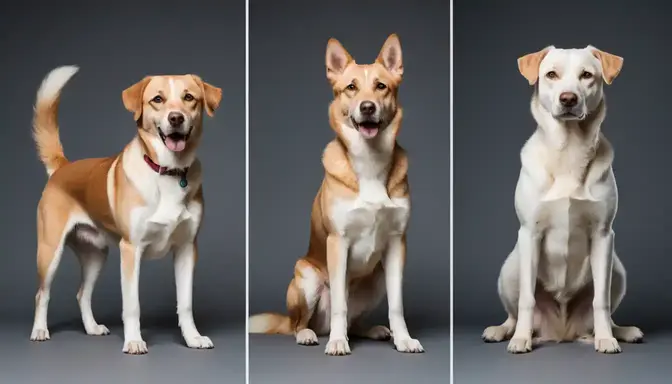
Responding to Your Dog’s Signals
Effective communication hinges on not only recognizing canine signals but also responding appropriately to foster trust and emotional well-being.
Misinterpreting or ignoring these cues can escalate stress, while timely, informed actions strengthen the human-canine bond and promote positive behavioral outcomes.
Reacting to Stress or Fear Signals Appropriately
When dogs exhibit signs of discomfort, such as whale eye, lip licking, or a tucked tail, owners should prioritize de-escalation over correction:
- Avoid Punishment: Scolding or physical restraint exacerbates fear, reinforcing negative associations. Instead, remove the stressor (e.g., distance from strangers) and allow the dog to self-soothe.
- Create Safe Spaces: Provide a quiet retreat (e.g., a crate or corner) where the dog can withdraw until calm. Pair this with low-stimulus environments to reduce overarousal.
- Redirect with Calmness: Use soft vocal tones and slow movements to reassure the dog. Offering a toy or treat (if the dog is receptive) can shift focus from stress to comfort.
Encouraging Positive Interactions
Proactive reinforcement of relaxed dog body language builds confidence and strengthens trust:
- Reinforce Calm Behavior: Reward loose posture, soft eyes, and neutral tail positions with treats or affection. This teaches dogs that relaxed states lead to positive outcomes.
- Respect Social Boundaries: Avoid forcing interactions. If a dog hesitates to greet someone, allow them to approach at their own pace, signaling respect for their emotional limits.
- Play Mindfully: Monitor play sessions for signs of fatigue or overstimulation (e.g., repetitive yawning). Pause activities if tension arises, ensuring interactions remain enjoyable.
Using Dog Body Language in Training
Incorporating non-verbal cues into training enhances effectiveness and prevents unintended stress:
- Spotting Stress During Sessions: Watch for freezing, excessive panting, or refusal to engage—early indicators that the dog is overwhelmed. Adjust training intensity or simplify tasks accordingly.
- Aligning Rewards with Emotional State: Use high-value treats for fearful dogs in novel environments, but switch to verbal praise for overly excited dogs to avoid hyperarousal.
- Leverage Canine Communication: Mimic calming signals (e.g., turning sideways, crouching) to mirror a dog’s non-threatening intent, fostering cooperation during recall or leash training.
By integrating observational skills with responsive care, pet owners transform passive coexistence into an empathetic partnership—a practice rooted in science and nurtured through daily mindfulness.
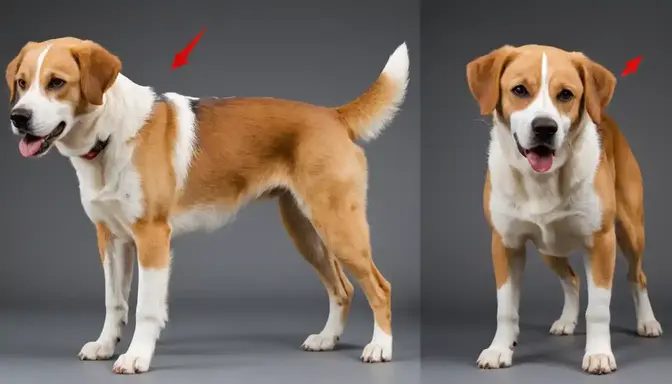
Tips for Observing and Recording
Mastering canine communication requires systematic observation and documentation.
By refining these skills, pet owners can detect subtle emotional shifts, identify behavioral patterns, and respond proactively to their dog’s needs.
Improving Skills in Reading Non-Verbal Signals
Developing expertise in interpreting your dog’s unspoken cues involves deliberate practice and contextual awareness:
- Focus on Context: A wagging tail may indicate excitement during play, but signal anxiety in unfamiliar environments. Always evaluate surrounding factors like location, stimuli, and social dynamics.
- Prioritize Consistency: Observe behaviors across multiple scenarios (e.g., vet visits vs. home routines) to distinguish baseline traits from situational responses.
- Note Subtle Changes: Track micro-expressions such as ear flicks, partial lip licking, or shifts in weight distribution—these often precede overt behavioral shifts.
Keeping a Journal of Observations
A structured journal transforms casual noticing into actionable insights:
- Record Key Details: Note date, time, environment, and specific triggers (e.g., thunderstorms, greetings). Include descriptions of posture, tail movement, and vocalizations.
- Use Visual Aids: Sketch or photograph notable expressions and pair them with written notes for clarity. For example, document a tucked tail during fireworks alongside a relaxed posture at the park.
- Categorize Behaviors: Classify entries by emotional state (e.g., fear, curiosity) and activity type (e.g., feeding, walking). This helps identify recurring patterns tied to specific contexts.
Identifying Patterns Over Time
Analyzing longitudinal data reveals deeper insights into your dog’s emotional landscape:
- Track Triggers: Highlight situations consistently linked to stress (e.g., car rides, meeting strangers) or relaxation (e.g., favorite toys, familiar people).
- Assess Frequency and Duration: Determine if certain behaviors (e.g., yawning during training) occur sporadically or persistently, which can inform adjustments to routines or training methods.
- Adjust Interventions: Use journal insights to refine strategies—for instance, if a dog shows repeated whale eye at the groomer, schedule shorter sessions with high-value rewards.
Visual Reference: Example Journal Entry
Sample entry:
Date: Year-Month-Day
Scenario: Thunderstorm during evening walk
Behavior:
- Tail: Low and stiff
- Ears: Flattened against the head
- Eyes: Whale’s eye is visible
- Posture: Crouched with weight shifted backward
Owner Response: Guided dog to quiet room, played white noise, offered chew toy
Outcome: Signs of relaxation (soft eyes, tail mid-height) within 20 minutes
This format simplifies tracking progress and validating the effectiveness of interventions.
Refining Observation Habits
- Practice Daily: Dedicate 5–10 minutes to focused observation during routine activities like feeding or playtime.
- Involve Others: Ask family members or trainers to contribute notes, offering diverse perspectives on your dog’s behavior.
- Leverage Technology: Use voice memos or video recordings to capture fleeting signals that may be missed in real-time.
By combining structured documentation with mindful analysis, pet owners transform reactive interactions into proactive care—a practice rooted in science and strengthened through consistency.
Conclusion
Understanding your dog’s non-verbal signals is not just about recognizing isolated cues—it’s about interpreting the full spectrum of emotional and social context.
Here’s a concise recap of critical insights:
- Context Shapes Meaning: A wagging tail or flattened ears can signal joy, fear, or uncertainty depending on the environment and accompanying behaviors.
- Stress Signals Demand Action: Whale eye, lip licking, or a tucked tail often precede reactive behavior, requiring immediate de-escalation strategies.
- Breed and Development Matter: Puppies exhibit less refined signals, while breeds with unique anatomy (e.g., brachycephalic faces) may mask stress through structural limitations.
- Holistic Observation Wins: Isolating tail position or ear orientation risks misinterpretation—always assess posture, eye contact, and vocalizations together.
Encouragement to Practice Mindful Observation
Mastering canine communication is a skill honed through consistency and intentionality. Daily practice transforms casual noticing into actionable expertise:
- Start Small: Dedicate 5–10 minutes daily to observe your dog during routine moments—feeding, walks, or playtime. Note subtle shifts in posture or gaze.
- Document Patterns: Keep a journal to track behaviors linked to specific triggers (e.g., thunderstorms, strangers). Over time, this data reveals predictive trends and progress.
- Engage Proactively: Use insights to adjust interactions, whether reinforcing calmness with treats or avoiding overstimulation during training.
By prioritizing empathy over assumption, pet owners build trust, prevent conflicts, and deepen their bond with their canine companions.
Remember, every flick of the tail, tilt of the head, or shift in weight is a dialogue waiting to be understood—a silent language rooted in science and nurtured through daily mindfulness.
For ongoing learning, explore these trusted resources:
- American Kennel Club (AKC): Canine Body Language Basics
- Dogs Trust: Understanding Your Dog’s Signals


